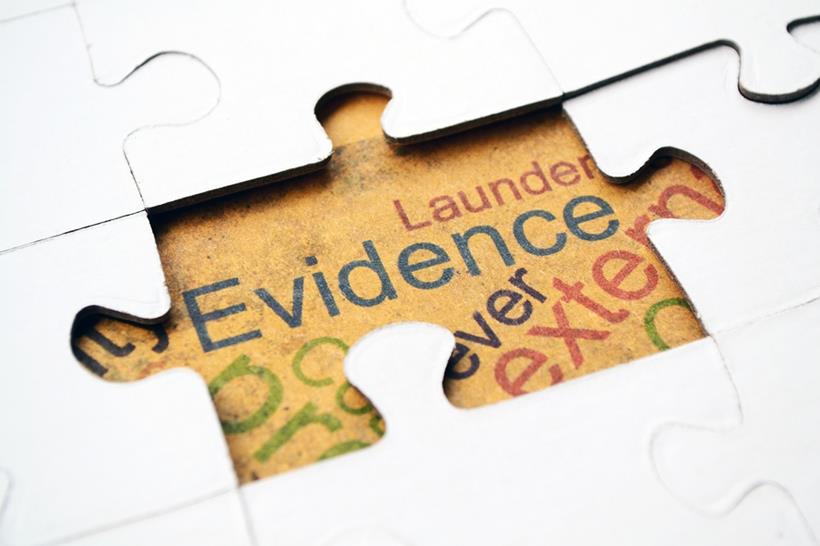
There’s a story I tell regularly, about a government agency that couldn’t justify investing in information management. By itself, that’s hardly a news story. But what is notable about this particular example is that the agency’s immature information management processes could be clearly demonstrated to contribute indirectly to the death of people on a regular basis.
I don’t tell the story to shame the agency in any way – in fact, I’m careful not to mention any names – but for its shock value. So far, it’s the most effective way I’ve found to drive my regular audience of Records and Information Managers to stop thinking in terms of system features and advantages, and get them to concentrate on the benefits to their organisation.
These same Records and Information Managers frequently complain that they can’t get senior management’s attention. What I find is that they often don’t consider how they waste their few chances to do so, usually by leading their pitch with the need for compliance, or system features. Senior managers have to juggle a large number of obligations and demands on their attention, and they will quickly tire of someone who keeps reappearing, only to tell the same story repeatedly.
Consider instead a conversation with a Chief Financial Officer that begins this way: “How would you like to save $1m in rework?” Or “Are you interested in ensuring you can easily maintain our current savings from self-insurance for workers’ compensation?” Or a conversation with a Human Resources Director that begins with “What benefit would we get from reducing recruitment times by 30-50%?”
Consider on the other hand a conversation with a Chief Executive Officer that starts with “We’re in breach of our national digital recordkeeping obligations!” Or “If we implement this software, we’ll be able to leverage workflow and keep an audit trail for document edits.”
Which one do you think will get a response beyond an agreement it is a good idea? Which ones will have questions being asked of you about how it can be done? Which ones will have you invited to make a presentation rather than trying to shoehorn your way into an executive’s already busy schedule?
The starting point for calculating the value of information and its mature management is to throw out the records and information mindset and move to a business improvement mindset.
Starting with a business improvement mindset allows you to think clearly about the value of information. That doesn’t mean we throw out all the implications of good records management practices, but more let them have a back seat while we focus on business benefits.
There are several common business processes found in almost any organisation that can be improved with a properly functioning Electronic Document and Records Management System (EDRMS). They include but are not limited to:
- recruitment
- contract management
- any approval process that includes multiple authorisations
- meeting management
- workers’ compensation claims
- asset recording and verification
- customer complaint handling
- enrolments
- employee performance management
- case management
- procurement
If you consider how these things run in your own organisation, you might find that one or more of these processes are already managed by some kind of existing system. That system may already have delivered benefits to the organisation in terms of automation, efficiency, security, data accessibility, timeliness, or accuracy. This could make it more difficult for you to make a case based around business improvement. It’s my experience, however, that when you look hard enough, you can uncover large savings or greatly reduced risk, or both.
The first step in calculating the value of information is to identify processes that are highly manual. There might be a lot of paperwork involved, or multiple emails that go back and forth. There might be a large number of process steps to wade through. Or perhaps several different roles are involved, or the process is high volume or labour intensive. Maybe there are significant adverse consequences if the process goes wrong.
Once you’ve identified and discussed a range of these processes with the business, work with one or two key people from the business to develop process maps. Use the post-it note technique of process mapping to make life easy, and you should be able to complete the task in an hour or so.
You can then analyse the process map for issues including but not limited to:
- wasted time, whether because progress can’t be tracked or because information is inaccessible;
- poor information security;
- unnecessary steps in the process;
- sequential steps in the process which could be run in parallel if the information were accessible by multiple parties at the same time;
- manual sharing of information, e.g. by photocopying, manual transport, faxing, or emailing;
- poor identification and tracking of versions of information;
- storage of large volumes of manual records;
- duplication of manual records stored in different geographical locations; and
- information regarding projects or contract negotiations that is distributed amongst personal and shared drives, and emails and email attachments.
Once that analysis is complete, run another workshop with people from the business who are well-placed to answer questions about the implications of these issues for the business in terms of:
- costs of storage
- opportunities lost because processes take longer than they should
- manual labour costs
- cost of disputes relating to uncertainty about information accuracy, for example for contract disputes
- increased rework due to inaccessibility of information (e.g. previous studies, current engineering drawings, contracts)
- costs of overpayment to vendors due to information being incomplete
- opportunities lost due to key individuals going on leave and their information becoming inaccessible
- the consequences of non-compliance with audits, for example self-insurance or financial audits
- the consequences of information not being accessible or accurate in an operational area which has practices that are higher risk in those circumstances
This is by no means a comprehensive list. It does however, give an insight into the kinds of problems that may be overcome with a mature set of records and information processes and an EDRMS.
Once you have completed that workshop, it is time to dream of what is possible if you do have a functioning EDRMS and mature practices. Brainstorm with the business what is possible. This may include but is not limited to:
- public access to information through a portal, with a similar internal intranet setup
- automated internal and external processes
- improvements in teamwork when common access to information is possible
The next step in the process is the key one, and it’s not often expected of a Records and Information Manager. It’s to convert the benefit from qualitative to quantitative, in the form of a dollar figure. Labour savings, storage savings, and material savings are relatively straightforward to calculate. Opportunity costs and the benefits of reduced risk to the organisation are not. Going through different methods of calculating benefit is beyond the scope of this article, but you may find that your audit function can help. They often have processes they use to evaluate these more difficult to calculate benefits. They may also have audit reports that identify and perhaps quantify some of the issues you have come up with.
You should now be ready to mount a case through business improvement, rather than compliance. Using a dollar figure for the benefit in your discussions with senior managers is much more likely to get them asking questions about exactly how it is that you can deliver what you claim. If that happens, you are on your way to getting not only senior management endorsement, but getting one or more managers properly committed to your cause. Our research over the years has shown this is a prerequisite for successful implementations.






